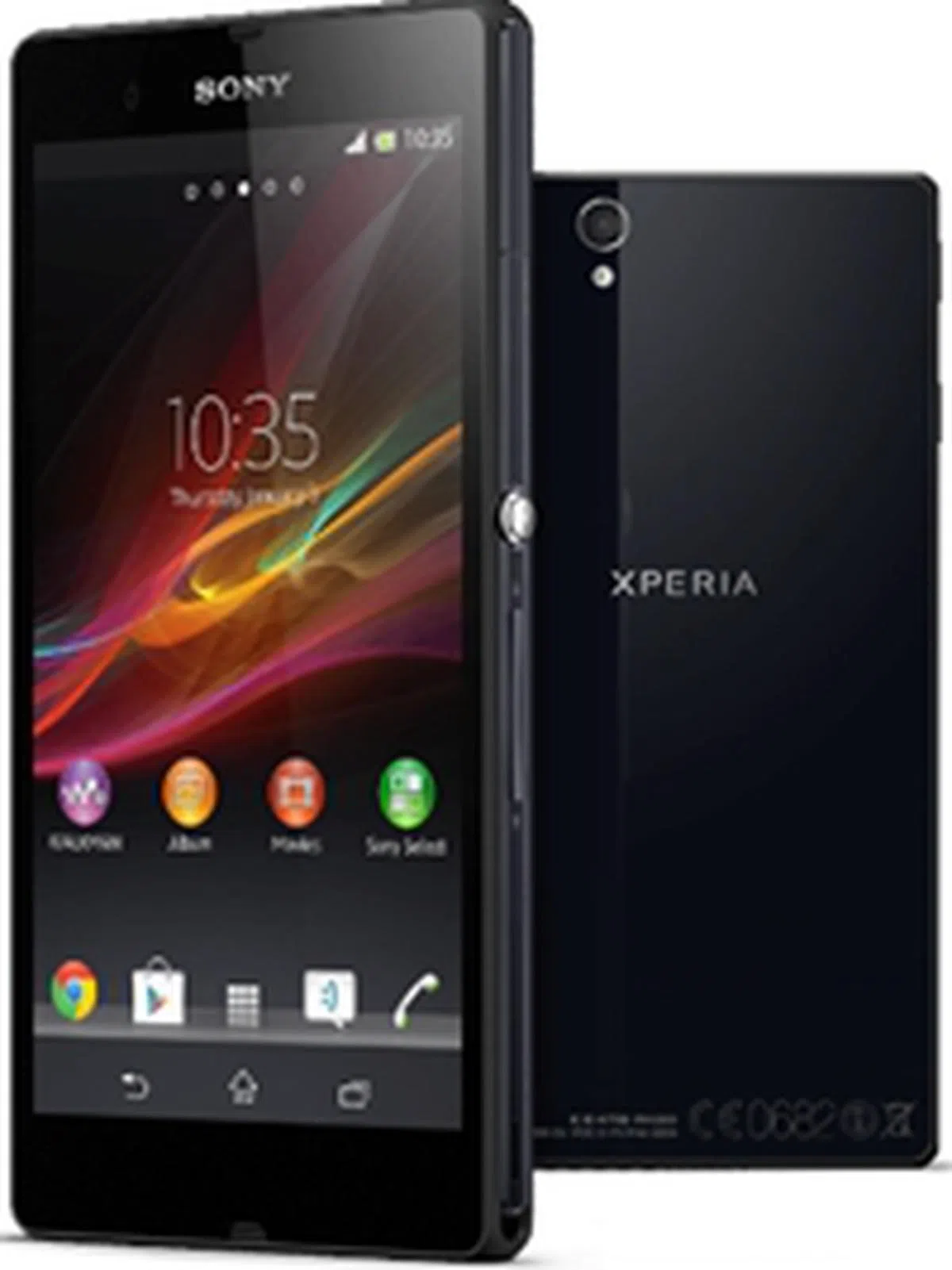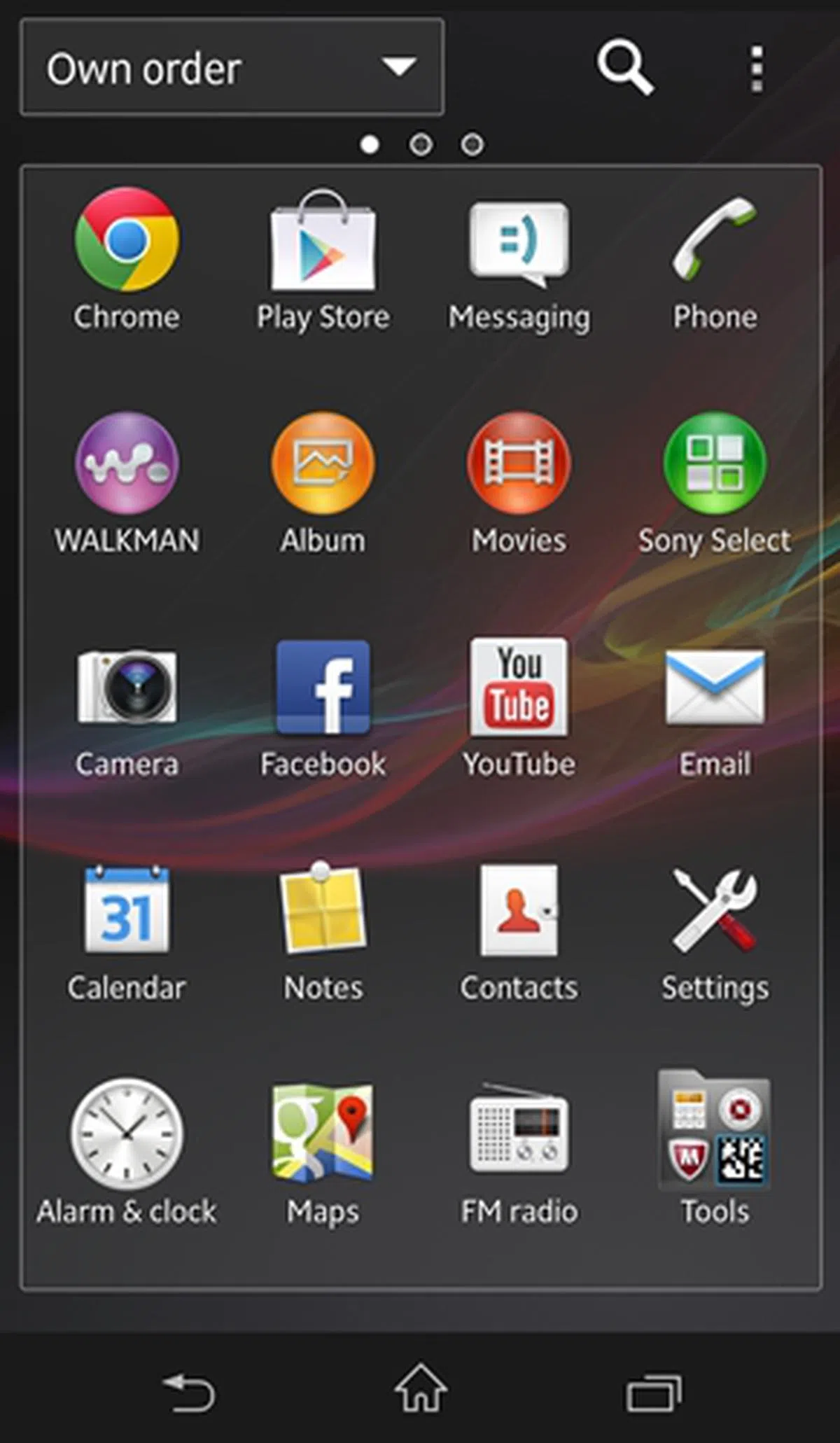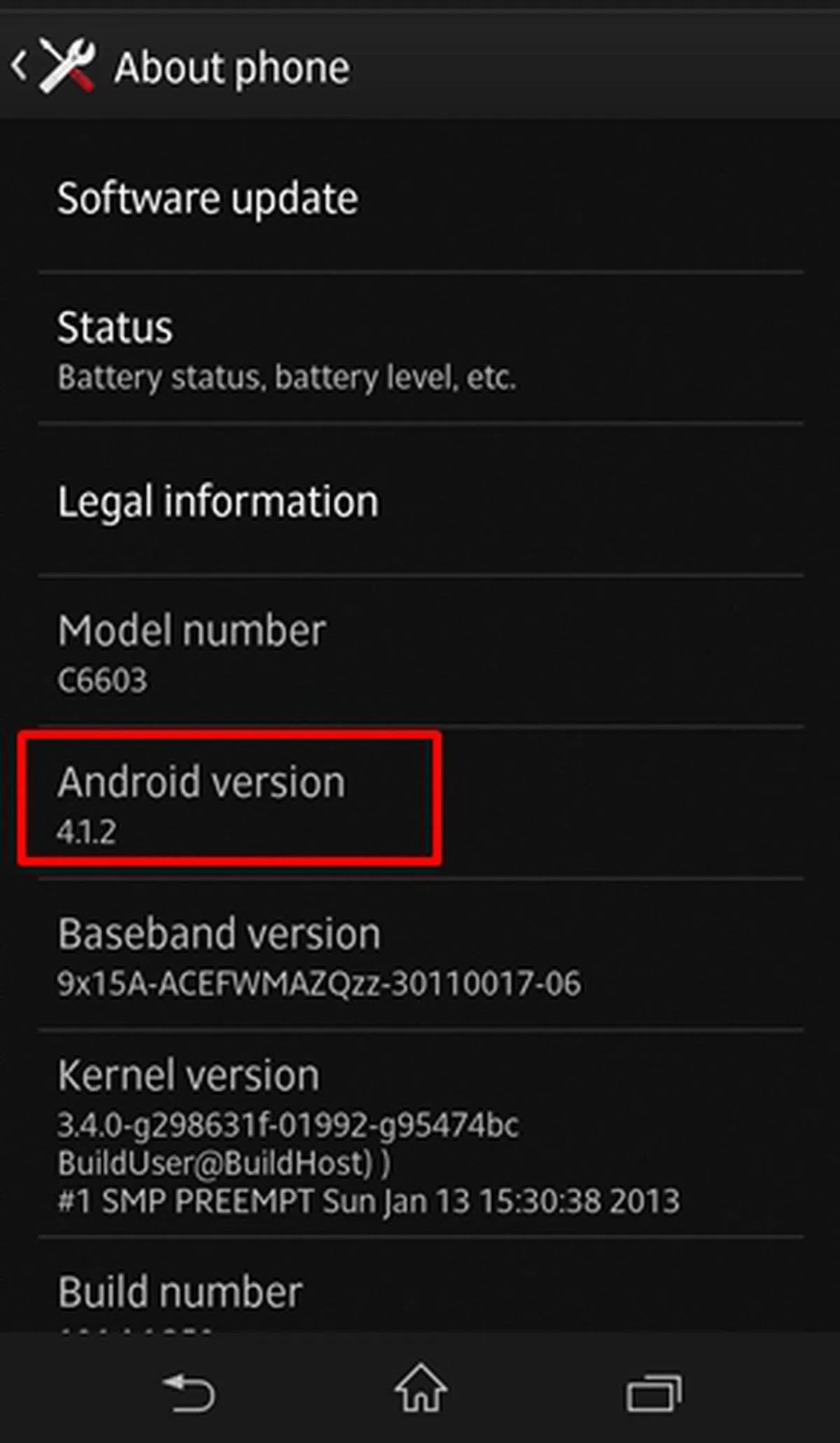Sony Xperia Z - The 5-inch Contender
The Sony Xperia Z is Sony Mobile's first in many areas - first quad-core, first 5.0-inch device, first full HD display, first to support HDR video recording and so on. Will the latest Android 4.1 flagship device revive the company's flogging sales? We give you our verdict in this review.
By HardwareZone Team -
Sony Xperia Z - The 5-inch Contender

Welcoming Sony Mobile's quad-core, 5-inch contender.
First glimpsed at CES 2013, the Sony Xperia Z has gotten a lot of hype over the last few months, as it is largely touted to be the Japanese company's big ticket item. Sony Mobile hasn't been doing very well on the Android front in the past couple of years and has fallen behind stronger competitors like Samsung, companies who continue to push the envelope in innovation and product differentiation. With Xperia Z, Sony Mobile has finally caught up with the rest of manufacturers, wisely choosing to fight them head-on with the latest hardware specs (and waterproof exterior) which includes a snappy Qualcomm Snapdragon quad-core processor, 2GB of RAM, 13-megapixel camera, a near vanilla Android experience and above all, a 5-inch screen.
Does the newly-released juggernaut have the right elements for victory? Let's find out.
 | Key highlights of the Sony Xperia Z
|
Design & Handling
Sony has always been breaking new frontiers when it comes to design and it certainly shows on its flagship 5-inch Xperia Z. That's not to say that there's no signature Sony touch of course - it is instantaneously recognized as part of Sony Mobile's portfolio of mobile devices, right from its angular stature and down to its minimalist design.
Of course, the main attraction here is in its extremely sharp and rather huge 5-inch display. With an astounding 433 pixels per inch and running on the Mobile Bravia Engine 2, you really can't help but notice the clarity of the details on the screen. Thankfully, Sony has managed to keep the larger-than-life smartphone petite and slim for its class at 7.9mm - the Xperia Z feels light in our hands at a relatively decent 146g. For the sake of comparison, the 5-inch HTC Butterfly weighs 140g, a few grams shy of the Xperia Z. As such, we could easily wrap our hands around the device and get a secure hold of it.

One thing we notice that there's no touch controls on the phone but rather, Sony Xperia Z relies heavily on software touch controls (back, home, recent apps), which unfortunately, takes up a bit of space on the 5.0-inch screen.
Further complementing the phone is its very understated and classy design. For most parts, the phone is angular, save for its four barely rounded corners. On its back, the word "Xperia" is sprawled across in Sony's trademark font. As its battery cannot be removed, all ports (power, headphone, SIM card slot) are placed along the edges of the device. Being a waterproof phone, they are all covered with plastic flaps which clip into place. As with past experiences, these are usually less sophisticated in execution than in theory - while they work well, they are slightly cumbersome and a little fiddly. Otherwise, when put properly in place, these ports are tucked inconspicuously out of sight.

To live up to its claims of having the highest levels of dust and water resistance (IP55 and IP57), Sony made number of modifications to the design of the Xperia Z. Besides the usual connectivity ports and card slots, the Xperia Z is sealed up pretty tight.
Adopting the same design principles as Google and LG, the Xperia Z sports glass panels, one on the front and another on back. However, Gorilla Glass they are not; instead, Sony uses a combination of tempered glass and anti-shatter film to boost the scratch resistant properties and durability of the glass panels against wear and tear. Unfortunately, due to its glass panels, the Xperia Z turns into a huge mess of unsightly finger prints after mere minutes of manhandling. In fact, it's one of the worst phones in recent times to with regards to the ease in which it picks up fingerprint smudges and the visibility of these unsightly marks.

The Xperia Z is available in three color options, black, white and purple. Note the elegant wording on the tempered glass back (which only stays elegant to the extent you wipe it clean).
Perhaps one of the more 'unique' design features of the Xperia Z is its metallic power button, which is placed on the right side of the device as opposed to on the top. It's a little too eye-catching for our taste, but thankfully, its location and in-your-face design makes it easy and convenient for users to access the button. Due to its raised nature, it is very easy to press the button even without looking at it. Take note though, several of our office colleagues first thought it was a shutter button for the camera and it's quite likely to be associated as such for most first timers due to its location once you hold up the device for landscape photo taking.

You can't miss out on the eye-catching power button even if you want to. Its location also makes it convenient to access the button, which is particularly important for a device with a 5-inch display as you do not need to stretch too much to reach the top to turn on the screen.
Features
As with all newly-released Android devices, the Xperia Z runs on Android 4.1.2 Jelly Bean out of the box. Sony states that it will be rolling out the Android 4.2 update shortly after the launch of the device in Q1, but at present it remains on Android 4.1. Sony Mobile has left the Android experience relatively intact compared to HTC and Samsung, and we are sure Android purists will appreciate that.
Pressing the Recent Apps button will reveal the multitasking menu on the right, and a shortcut bar dedicated for "small apps". What are "small apps"? They allow for deeper multi-tasking, quite in the same vein as Samsung's multi-window feature or LG Optimus's QSlide function. There's more to play with however, considering the potential of an open-source app environment.
Clicking on a small app, say Calculator for example, brings out a mini calculator pop-up that can be used and is visible/functional even as you are utilizing other apps. The downside is that you can only open one small app at a time.

Pressing the Recent Apps button will reveal the multitasking menu on the right, and a shortcut bar dedicated for "small apps".

Four small apps come pre-installed but you can add on to the collection by simply clicking on the "+" sign. This will redirect you to Google Play.

Some examples of small apps at work. On the left, you have a mini-camera window for capturing photos and on the right, to create voice memos.
Because battery longevity is a such a big incentive to users in this time and age of battery sapping smartphone devices with big screens, energy saving modes are often included on the devices. The Sony Xperia Z is no exception, and comes intact with one called the Battery Stamina Mode.

Enabling Battery Stamina Mode will disable Wi-Fi, mobile data and most applications temporarily. You will still be able to receive phone calls, text messages, Sony Calendar notifications and alarm signals. The Music Player and FM radio will continue to work, while downloads and uploads are allowed to finish.
With strong competition between the manufacturers to showcase camera phone technology and Sony has traditionally been at the forefront in this area. To further complement the photographic experience, Sony has added a couple of incentives.

Burst and Sweep Panorama modes are some of the software enhancements you can get on the Xperia Z.
Apart from still images, the Sony Xperia Z is also the first mobile phone to feature HDR Video capabilities. Capturing videos in HDR means that resultant videos will have higher dynamic range and greater details.
Performance
Like the HTC Butterfly and LG Optimus G, the Sony Xperia Z is part of the 5-inch crowd, one that's outfitted with Qualcomm Snapdragon S4 Pro quad-core processors.
To find out how the Xperia Z stands amongst its peers, we use the Quadrant test as a benchmark. The test evaluates CPU, memory, I/O and 3D graphics of Android devices. In this comparison, we pit the device against LG Optimus G, HTC Butterfly and Galaxy S III LTE.
Device | Sony Xperia Z | LGOptimus G | HTC Butterfly | Samsung GalaxySIIILTE |
CPU | Qualcomm Snapdragon S4
quad-core 1.5GHz | Qualcomm Snapdragon
S4
quad-core 1.5GHz | Qualcomm Snapdragon S4
quad-core 1.5GHz | Exynos 4212 Quad
quad-core 1.4GHz |
GPU | Adreno 320 | Adreno 320 | Adreno 320 | Mali-400MP |
RAM | 2GB | 2GB | 2GB | 2GB |
OS | Android 4.1 | Android 4.1 | Android 4.1 | Android 4.1 |

With all three phones (Xperia Z, Optimus G, Butterfly) equipped with the same Qualcomm Snapdragon S4 quad-core 1.5GHz processor, 2GB of RAM, and Adreno 320 GPU, it isn't that surprising to see the Xperia Z scoring an acceptable 7615, a score that's just slightly behind HTC Butterfly's. In comparison, the Galaxy S III's last-gen Exynos quad-core chip has finally showed its age with a lower score of 5260.
Number crunching aside, we were impressed by the speed of operation on the Xperia Z. A combination of Android 4.1 Jelly Bean, Qualcomm Snapdragon S4 Pro quad-core processor and its near vanilla OS makes the experience on the Xperia Z a buttery smooth one with no lags in performance or transitions.
Imaging & Multimedia Performance
The Sony Xperia Z is equipped with a whopping 13-megapixel rear camera with f/2.4 aperture. While levels of clarity and details were adequate (though we were hoping for the noise reduction engine to be less aggressive), the colors came out slightly too whitewashed for our liking. Compared to the LG Optimus G's test outcome, the sample photo was significantly less warm and carried a overtly blue tinge.

The Xperia Z takes photos of decent image quality. However, colors are washed out with a blue-ish tint. The noise reduction engine over compresses the details, leaving them with a smudge-like appearance.
The Sony Xperia Z comes with a clear 1920 x 1080p 5-inch display equipped with Sony Mobile's Engine 2, one that works to tweak appearance of photos and videos on the device. The display seems to pale slightly in comparison with the awesome screen on the HTC Butterfly, but on its own, it does its job pretty well. One thing we note, however, is that excessive back-lighting on the Xperia Z does make the screen look a tad too 'whitewashed' for our liking.
For multimedia storage woes, the Xperia Z comes with 16GB built-in memory and a microSD card slot, which allows you to upsize the memory size by an additional 32GB. Unfortunately, the device doesn't come with any Dropbox cloud storage tie-ins, something that we have found to be included on recent HTC and Samsung Android mobile devices.
Battery Mileage
Our standard battery test for mobile phones includes the following parameters:
- Looping a 800 x 480-pixel video with screen brightness and volume at 100%
- Wi-Fi and Bluetooth connectivity turned on
- Constant data streaming through email and Twitter
Specifications/Device | SonyXperia Z | LG Optimus G | HTC Butterfly | Samsung GalaxySIIILTE |
Processor |
|
|
|
|
Display Size |
|
|
|
|
Display Type |
|
|
|
|
Display Resolution |
|
|
|
|
Dimensions |
|
|
|
|
Weight |
|
|
|
|
Battery |
|
|
|
|



Armed with a full HD display and a quad-core processor, it is quite likely that the Xperia Z will run out of juice pretty fast. Unfortunately, our worries were realized. Putting the device through our test (with the Mobile BRAVIA Engine 2 off but brightness turned up to the maximum), the phone managed to only last a paltry four hours. In comparison, using the same test metrics, the HTC Butterfly lasted slightly over six hours. Even the latter's score is a far cry from Samsung Galaxy S III LTE's outstanding close-to-ten hours battery life. Nonetheless, the results are even more disheartening given that the Xperia Z comes with the biggest battery capacity out of the four devices.
Due to its physical dimensions and weight, it is the heaviest out of the four. As such, the Xperia Z ended up last in the Portability Index where each device is assessed on its ability to balance battery mileage with its size and weight. Once again, both LG Optimus G and the HTC Butterfly ousted the Sony Xperia Z.
Putting the phone through a daily grind (texting, internet browsing, calls and messaging), the Xperia Z could last throughout a working day comfortably. The caveat is that you have to select a lower level of brightness or choose the option to adapt to lighting conditions. While using the phone at medium to maximum brightness, the battery drops fairly quickly and we also realized that the back of the phone heats up very fast as well. Of course, it would be wise to enable any of the power management modes that Sony has provided with their software.
Conclusion

Admittedly, the purple Sony Xperia Z is a looker.
The Sony Xperia Z might very well be the best Sony Mobile phone thus far - powerful with a speedy quad-core Snapdragon processor, solid build quality, angular design and a competent 5-inch display. Of course, this is topped with LTE and NFC connectivity. This puts it on par with an existing and growing pool of LTE-equipped devices. Coupled with the growing LTE presence in Singapore, this gives the Xperia Z an extra edge ahead of its closer competitors, including the HTC Butterfly. More importantly, the Xperia Z is what we can finally call a heartening effort to break into the Android market, given its previous lackluster efforts.
While it's not a must-have feature, the Sony Xperia Z's hardiness is further accentuated by its dust and water resistant body. To add on, Sony uses a combination of tempered glass and anti-shatter film to boost the scratch resistant properties and durability of the glass panels against wear and tear. While its a huge fingerprint magnet, it does a good job of protecting the phone from external factors.
The major downside is of course, in its meager battery life, an eternal point of contention for smartphones with increasingly bigger and bigger screens. Compared to the rest of the devices tested in this review, it fared fairly poorly at four hours on our strenuous battery test. Fortunately, with some power saving tips and profiles, you could get the phone to last for a day of normal use.
For people who find the Samsung Galaxy Note II (S$998) to be a little too big for their liking, the Xperia Z (priced at S$998 as well), like the Butterfly, strikes a delicate balance between size and usability. While the Galaxy Note II offers better battery life, innovative software features and a bigger screen, the Xperia Z offers a sharper display in a lighter and easier to handle chassis. Otherwise, there's the slightly smaller 4.8-inch Samsung Galaxy S III LTE or LG Optimus G, which comes pumped with LTE and similar specs.
Previously, one of the hotly debated issues in the forums is whether the HTC Butterfly or the Sony Xperia Z constitutes a better purchase. With the recent announcement of the HTC One, Sony Mobile now has a more formidable competitor in the Taiwanese company's latest device. While it comes with a smaller 4.7-inch Super LCD 3 display (same 1920p resolution), it also features a newer Snapdragon 600 quad-core processor, LTE and a rather impressive 4-megapixel HTC Ultrapixel camera. With its global launch set for March, prospective smartphone buyers might want to hold on to their purses before deciding on what to splurge on.
Our articles may contain affiliate links. If you buy through these links, we may earn a small commission.



